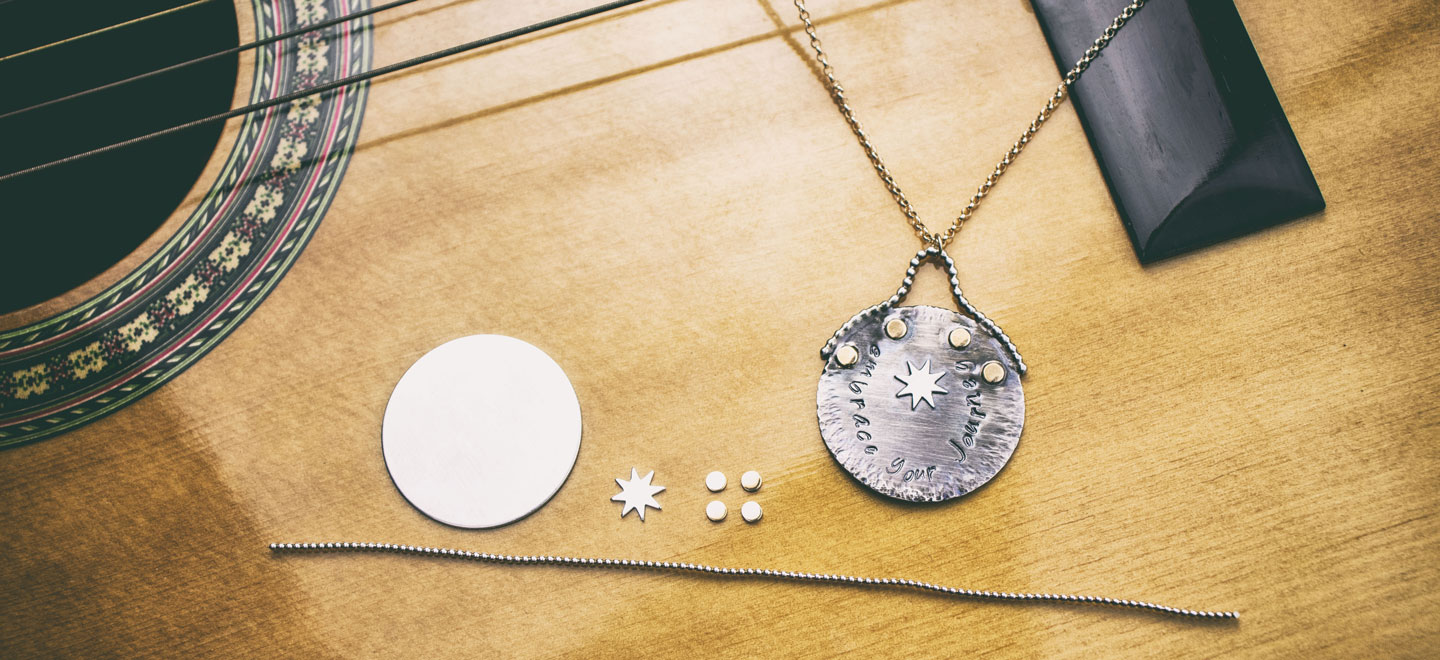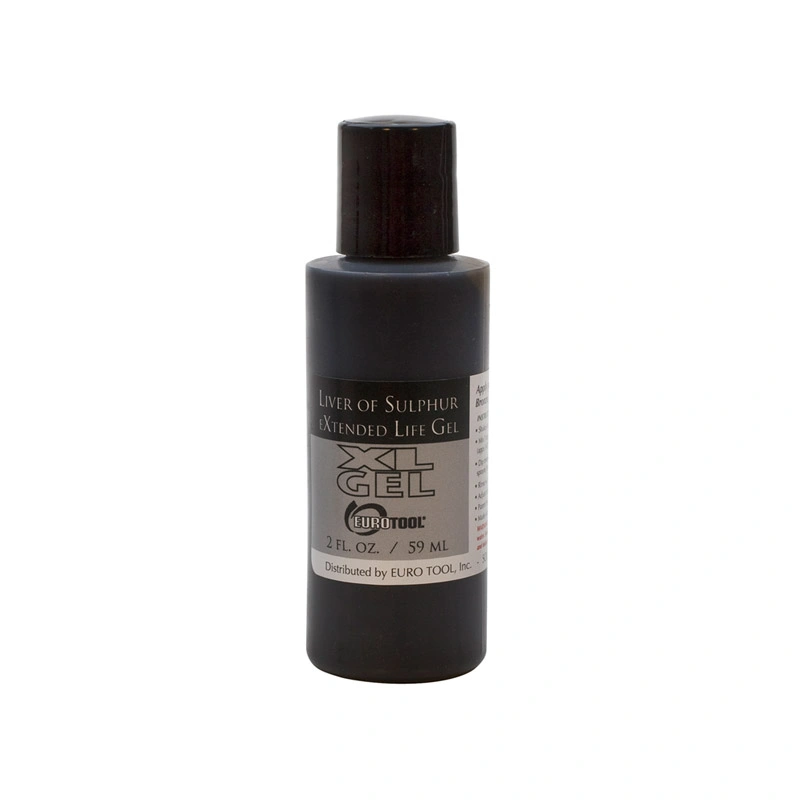From set-up to helpful tips, read why Liver of Sulfer makes such a great jewelry patina and is an essential product to have in your jewelry studio!
It looks gross, it smells gross, but it makes magic. Experiment with liver of sulfur metal jewelry patinas and see how much fun you can have with surface finishing. Liver of sulfur is a chemical compound that oxidizes the surface of some jewelry metals to blacken or darken the metal. Here are some tips to keep in mind.
1. How To Set Up Liver of Sulfur
There is not a precise recommended ratio of liver of sulfur per ounce of water, for example. Most metalsmiths have their preferred approximate recipe but generally speaking a tablespoon or so of liquid liver of sulfur per small 8oz crock is plenty. The chemical works best when it is warm or hot so most studios have a small crockpot designated for liver of sulfur. Plugin the crock and heat enough water to cover your piece(s) then fully dissolve liquid or crystal liver of sulfur into the warm water and you are ready to add a jewelry patina. Designate a pair of copper tongs for your patina and pickle station. They will completely blacken in the liver of sulfur. If you choose to use the same tongs for your pickle, you will get large black flakes in the liquid but it will still work just fine.
2. Use The Right Metal
Liver of sulfur works best on silver sheet and copper sheet. It will not work if the silver has an e-coating, anti-tarnish treatment or a plating finish of fine silver, rhodium or gold. Be sure your metal is clean by using pickle or sandpaper and then rinse. Surface contaminants will cause the metal to resist oxidation and effect results. Brass sheet can sometimes be oxidized but results are highly unpredictable. Plan for more trial and error and be prepared to be patient to get the jewelry patina you want.
Materials used: Copper chain, sheet, toggle with Milton Bridge enamels.
3. Expect Variation
Many factors cause variability in oxidation. You will see some patinas take on blue, purple or green highlights. Expect some surprises and you will never be disappointed. Also, keep in mind that the larger the surface area the more variation will show. Oxidation is often most effective on textured, stamped or engraved pieces where the whole piece is oxidized and then the surface is polished back to bright or satin which leaves the contrasting dark patina in relief only.
4. Be Safe
While this chemical is a studio mainstay, you should never be cavalier about safety precautions when firing up your crock. Liver of sulfur fumes are harmful to your health and should be avoided. Ensure thorough ventilation - that means much more than a cracked window. The smell is a good indicator of the level of fumes in an area. You may even want to keep your crock outside. Also, avoid leaning over your crock and inhaling right above the liquid where fumes are most intense. It is harmless on your skin though it may stain your skin and clothes.

Materials used: Copper sheet, sterling silver chain, leather and tooth charms
5. Layer It On
Timing is tricky to master and will depend on the solution intensity and temperature among other things. The best technique is to submerge your piece for a minute or less and then remove it, rinse in clean water and assess results. Repeat until you achieve the desired level of darkness in your patina. This allows you to examine your work and layer on the oxidation for greater stability. Jewelry patinas achieved after a long continuous bath will often flake off the surface.
6. Use Proper Disposal
Liver of sulfur can legally go down the drain in most areas as long as it has been neutralized first. This means letting it sit until the solution has turned clear. Another option is to leave it outside until it evaporates. At this point, you can pour it down the drain and flush the drain with warm water after. The diluted liver of sulfur is also an excellent garden fertilizer. Some plants love it and the compound is frequently used in commercial fertilizer products. Just make sure the chemical is sufficiently diluted first.
Shop liver of sulfur for jewelry now!
Further Resources:
Halstead Jewelry Making Supplies
Got questions? Email our studio coordinator at [email protected]. We’d love to hear from you. Sorry, studio support is not available by phone. Emails only, please.
Q&A
Q: Hi, I’m trying to darken raw brass prong settings but sometimes they turn green. Do you know how to control this? Is it because the solution is too hot? - Trissy
A: Hi Trissy. Brass is a difficult metal to patina. We can literally leave our brass pieces in a LOS solution for an hour or more for a slight patina while it only takes copper a few minutes to turn black. Here are some things we do here to patina brass: We use a warm pickle pot, you definitely don’t want to boil it. Also, I have applied LOS directly to a brass piece, without a pickle pot or water of any kind, other than just to wash it off when I’m finished. You may have more success doing that, but it smells awful so if you can apply it outside that’s ideal. Make sure to clean your brass thoroughly. Not only soap and water but use sandpaper to roughen it up a bit too. 600 or 800 grit should do well. These tricks should help. Good luck!
Q: Re: neutralizing LOS and pouring it down the drain: true that the chemicals will have been neutralized by the baking soda. However, I personally disagree that the solution can now be poured down the drain. There can be a fair amount of copper suspended in the solution. Copper is a nerve toxin; pouring the solution down the drain dumps the copper into the ground and eventually into our water table. Please do a little research here; if you find that my concerns have merit, please consider changing your info to suggest that neutralized LOS can be allowed to evaporate; then the sludge can be taken to the nearest HazMat location. Best, Mary
A: Great point, Mary. Heavily used solutions may accumulate metal particulates. If you find your liquid has a layer at the bottom it is best to filter out the solids before pouring down the drain. Thanks for posting!








